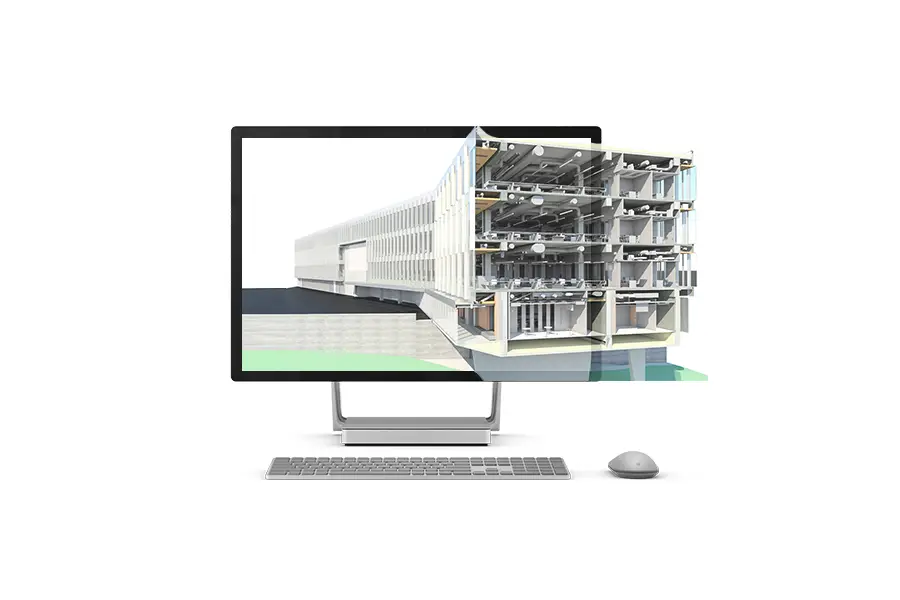
Learning Building Information Modeling (BIM) software is increasingly becoming a crucial skill for designers across various industries, particularly in architecture, engineering, and construction (AEC). As the industry evolves, the adoption of BIM is not merely a trend; it represents a fundamental shift in how projects are conceptualized, designed, and executed. This article explores the significance of BIM software for designers and the potential employment opportunities it opens up. While we don’t recommend software in this article, you can click here to find the best paid and free BIM software tools.
The Importance of BIM in the Future of Design
BIM is a digital representation of a building’s physical and functional characteristics, serving as a shared knowledge resource for all stakeholders involved in a project. This collaborative approach enhances communication and coordination, which are often lacking in traditional design methods. The increasing complexity of modern construction projects necessitates tools that can streamline processes and improve efficiency. BIM does just that by allowing real-time updates and modifications, ensuring that all team members are on the same page.
Enhanced Collaboration and Communication
One of the standout features of BIM is its ability to foster collaboration among various professionals. Designers, architects, engineers, and contractors can work on a single model, which reduces the chances of miscommunication and errors. This collaborative environment is akin to a symphony where each professional plays a vital role, leading to a more cohesive and efficient project outcome.
Cost and Time Efficiency
BIM also has significant implications for project costs and timelines. By enabling early detection of potential issues through clash detection and simulations, BIM helps avoid costly changes during construction. This predictive capability allows teams to make informed decisions, ultimately saving time and resources. The ability to visualize a project in 3D before construction begins means that stakeholders can foresee challenges and address them proactively, rather than reactively.
Future-Proofing Careers
As the AEC industry continues to embrace digital transformation, the demand for professionals skilled in BIM is expected to rise. A report indicates that the global BIM market is projected to grow significantly, highlighting the increasing reliance on this technology for efficient project delivery. Designers who invest in learning BIM software will not only enhance their current skill set but also position themselves favorably in a competitive job market.
Employment Opportunities for Designers
The integration of BIM into the design process opens up a plethora of career opportunities for designers. Here are some potential roles that require BIM expertise:
1. BIM Modeler
BIM modelers are responsible for creating and managing 3D models of buildings and structures. This role requires a strong understanding of both design principles and BIM software, making it an excellent entry point for recent graduates or those transitioning from traditional design roles.
2. BIM Coordinator
As projects become more complex, the role of a BIM coordinator has emerged. This position involves overseeing the BIM process, ensuring that all team members are utilizing the software effectively and that the model is updated accurately. Coordinators play a crucial role in maintaining the integrity of the project and facilitating communication among team members.
3. BIM Manager
For those looking to advance their careers, becoming a BIM manager is a viable option. This role involves strategic planning and implementation of BIM processes within an organization. BIM managers are responsible for training staff, managing resources, and ensuring that the company stays competitive in the market by leveraging BIM technology.
4. Design Consultant
With a solid foundation in BIM, designers can also pursue opportunities as consultants, providing expertise to firms looking to implement BIM processes. This role often involves advising on best practices, software selection, and project management strategies, making it suitable for those with extensive experience in the field.
Conclusion
The future of design is undoubtedly intertwined with BIM technology. As the industry continues to evolve, the importance of learning BIM software cannot be overstated. It not only enhances collaboration and efficiency but also opens up a wide range of employment opportunities for designers. By embracing BIM, designers can future-proof their careers and remain competitive in a rapidly changing landscape. The skills acquired through learning BIM will be invaluable as the demand for innovative and efficient design solutions continues to grow. Embracing this technology is not just a smart career move; it is essential for any designer looking to thrive in the AEC industry.

